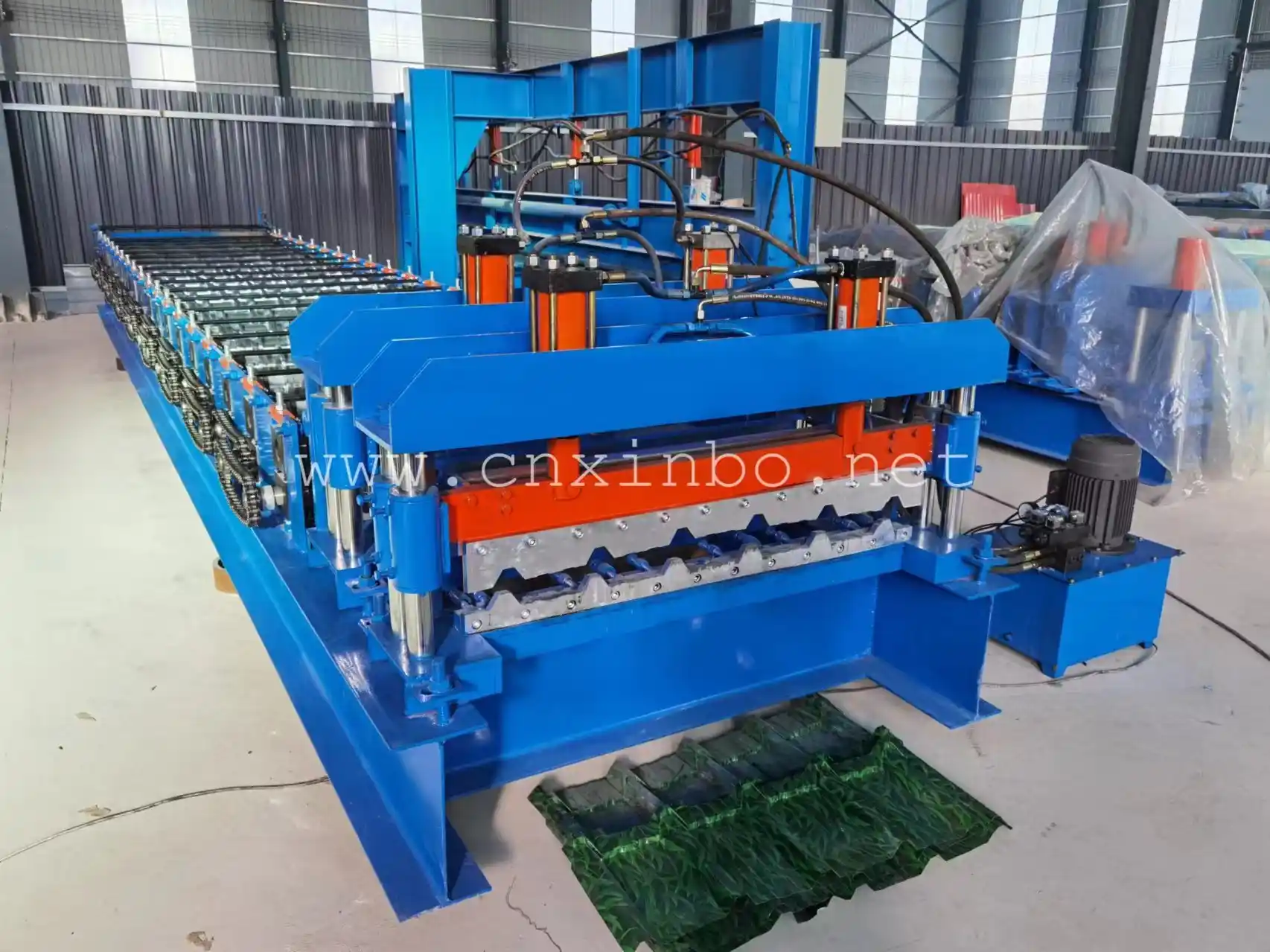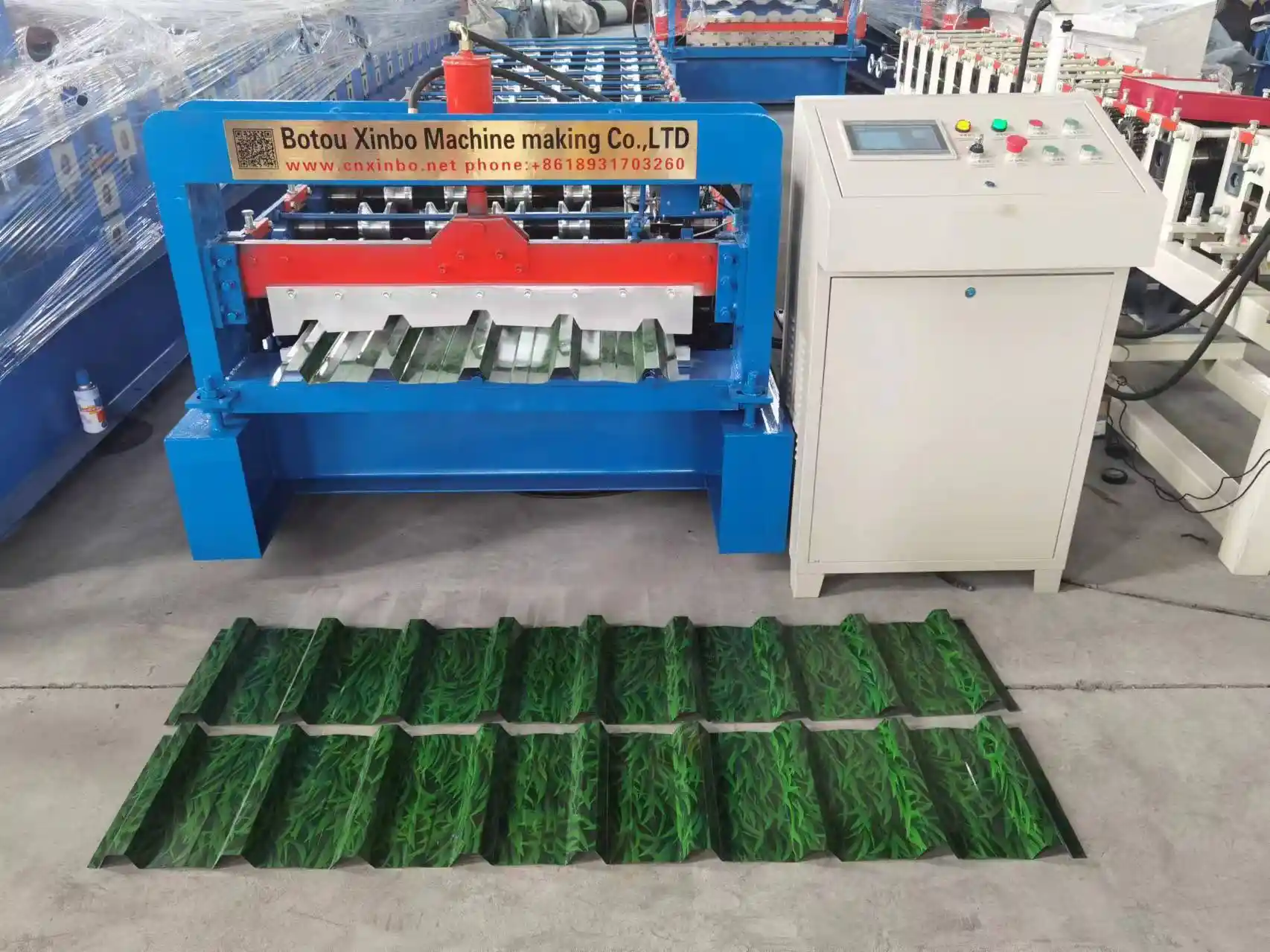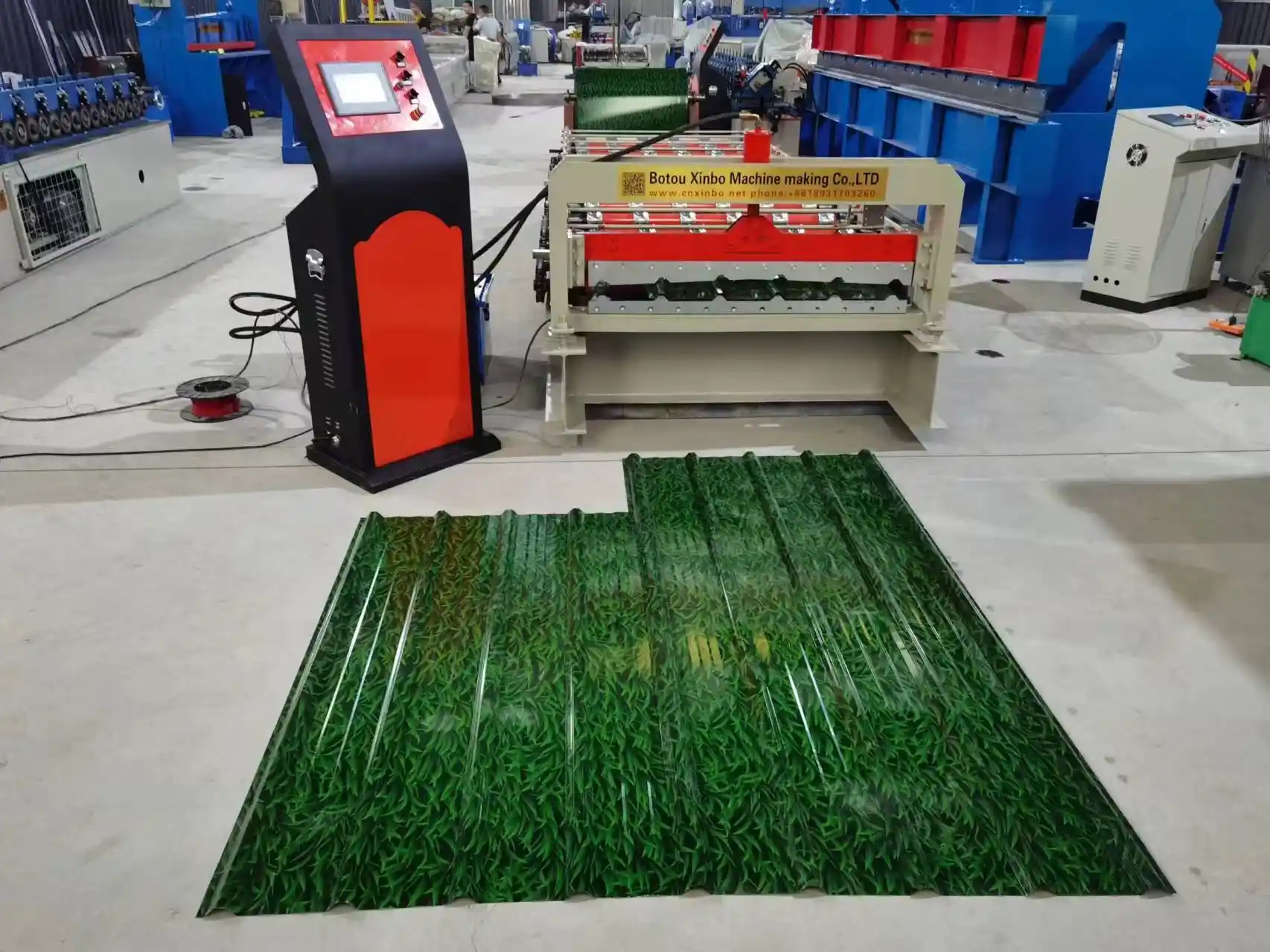Good quality
XinBo machine making CO. LTD is a professional manufacturer and exporter in roll forming machine,
VIEW MORE→Roll forming is a continuous bending operation in the metalworking industry that involves passing a metal strip through consecutive sets of rollers. Each set performs incremental parts of the bend until the desired cross-sectional profile is achieved. A roll forming machine performs these functions efficiently, transforming a flat sheet of metal into a shaped piece. This process minimizes waste and maximizes consistency, making it a cornerstone technique in modern metal fabrication.
The history of roll forming dates back to the 19th century, initially utilized in the manufacturing of simple corrugated sheets. Over time, technological advancements have refined and expanded the capabilities of roll forming machines. From manually operated systems to today’s fully automated and computerized models, the evolution highlights the growing importance of precision and productivity in metalworking. These advancements have enabled roll forming to cater to a wider range of industries, each with specialized requirements.
XINBO machine is a manufacturer which established in China since 2014. Quality assurance is provided by a team of our machine professional desiginer and producters and workers. New and innovative technology,such as roll forming machine, for the Europe, UK and Canada, as customer’s request and class. And we also have standard class for normal consumption.

The role of roll forming in the metal fabrication industry is indispensable. It provides an efficient method for producing long and medium-sized metal components with uniform cross-sections. The precision, speed, and automation capabilities of a roll forming machine make it a preferred choice for high-volume production. Its ability to minimize material waste and reduce labor costs further underscores its critical importance, particularly in industries like construction, automotive, and aerospace, where high-quality, cost-effective production is crucial.
Rollers are the heart of any roll forming machine. These cylindrical components are meticulously designed to shape the metal gradually as it passes through each stage. The rollers must be precisely aligned and maintained to ensure consistent product quality. Their design and material composition can vary significantly based on the type and thickness of the metal being processed, making them one of the most essential parts of the machine.
The decoiler is responsible for holding and unwinding the metal coil as it feeds into the rollers. Proper tension management is crucial to prevent the metal strip from slipping or distorting during the roll forming process. Advanced decoilers come with automated systems for adjusting tension, ensuring smooth and continuous operation. This component is vital for maintaining the integrity of the material and the efficiency of the roll forming process.
The cutting mechanism in a roll forming machine typically comprises mechanical or hydraulic systems designed to cut the shaped metal into specified lengths. The cutting can be integrated into the roll forming line for continuous operations, providing precise, clean cuts without requiring separate handling. This integration not only saves on production time but also ensures that each piece meets the stringent specifications required for final assembly.
Modern roll forming machines are equipped with sophisticated control systems that oversee the entire operation. These systems can be computerized, allowing for real-time monitoring and adjustments. The control system ensures that each phase of the process, from decoiling to cutting, is synchronized for maximum efficiency. Precise control over roller speed, material tension, and cut lengths ensures the final product meets the desired specifications consistently, making the control system an indispensable component.
Roll forming machines come in various configurations to accommodate different industrial needs. Single-pass roll formers are ideal for simple profiles and high-speed production, while multiple-pass machines handle complex shapes and thicker materials. Specialty roll formers, such as those designed for specific profiles like gutters or automotive components, offer customization for niche applications. Selecting the right type of roll forming machine hinges on understanding the specific requirements of the production process, including material type, product shape, and volume.

The roll forming process begins with the careful preparation of the raw material. Typically sourced as metal coils, these materials need to be examined for any imperfections that might affect the final product. Proper material preparation includes uncoiling, straightening, and sometimes pre-punching holes or slots depending on the design requirements. Ensuring the initial material is in prime condition sets the foundation for a flawless roll forming process.
As the metal progresses through the roll forming machine, it undergoes a series of gradual bends by passing through multiple stages of rollers. Each stage adds a new level of complexity to the shape, incrementally forming the desired profile. This progressive approach allows for high precision and minimal stress on the material, reducing the risk of cracks or deformities. The meticulous coordination between rollers ensures a seamless transition through various stages, culminating in a perfectly shaped product.
Quality control is an integral part of the roll forming process. Each stage is monitored to ensure the dimensions and shape adhere to specified standards. This involves regular inspections and adjustments to the rollers and other machine components. Advanced roll forming machines come equipped with sensors and digital monitoring systems that provide real-time data on production quality. Ensuring consistent quality throughout the process is crucial for meeting both regulatory standards and customer expectations.
One of the primary advantages of using a roll forming machine is its cost-effectiveness. The ability to process long metal strips continuously reduces material waste significantly. Furthermore, the automation of the roll forming process minimizes labor costs, as fewer operators are needed to oversee production. The precision of roll forming also reduces the likelihood of product defects, which can save on costs associated with rework or material scrappage. Over time, these factors combine to offer substantial cost savings, making roll forming an economically viable choice for many industries.
High precision and consistency are hallmark benefits of roll forming machines. The incremental bending stages allow for exact shaping of metal, accommodating complex designs with tight tolerances. Advanced control systems ensure that each piece produced adheres to specific measurements, maintaining uniformity across large production runs. This is particularly important in industries like automotive or aerospace, where even minor deviations can lead to significant issues. The reliable precision of roll forming translates into higher quality end products, boosting customer satisfaction and reducing post-production adjustments.
Roll forming machines offer excellent scalability, making them suitable for both small and large-scale production demands. Thanks to their high-speed operation, these machines can handle significant volume increases without compromising on quality. Whether a company needs to produce a few thousand units or millions, roll forming provides the flexibility to scale up or down seamlessly. This adaptability is crucial for businesses looking to grow or adjust their production in response to market demands, ensuring they can meet varied customer needs without extensive retooling or downtime.
In the construction industry, roll forming machines are often used to produce structural components such as steel beams, roofing panels, and wall cladding. The ability to create long, uniform sections without welding is particularly advantageous for construction applications. Additionally, roll formed products can be customized to specific architectural requirements, providing both strength and aesthetic appeal. The speed and efficiency of roll forming make it ideal for large-scale construction projects, where long-term durability and material performance are critical factors.
The automotive sector relies heavily on roll forming for producing components like bumpers, chassis, and door frames. High precision and consistency are essential in automotive manufacturing, where each part must meet stringent safety and performance standards. Roll forming’s ability to work with high-strength materials ensures that the final products can withstand the rigors of automotive use. Furthermore, the cost-effectiveness and scalability of roll forming are crucial in an industry where production volumes can be substantial, enabling manufacturers to meet high demand without compromising on quality.
In aerospace manufacturing, the importance of precise and high-quality components cannot be overstated. Roll forming machines are utilized to produce intricate profiles for aircraft frames, wings, and other critical structures. The process’s ability to handle lightweight yet strong materials like aluminum and titanium is particularly beneficial in this industry. Roll forming ensures that each component meets exact specifications and performance requirements, contributing to the overall safety and efficiency of aerospace vehicles. Given the high standards for reliability and material integrity, roll forming is an invaluable process in modern aerospace manufacturing.

When selecting a roll forming machine, the type and thickness of the material to be processed are primary considerations. Different machines are optimized for various materials, ranging from soft metals like aluminum to harder alloys like stainless steel. Ensuring the machine can handle the specific thickness and type of metal you require will influence not only the quality of the final product but also the machine’s longevity and maintenance needs. Matching the machine’s capabilities with your material specifications is critical for optimal performance.
Understanding your production volume is essential when choosing a roll forming machine. High-speed roll formers are suitable for large-scale production needs, offering efficient processing without sacrificing quality. Conversely, if your requirements are for smaller batches or specialized components, a machine designed for lower volume but with greater flexibility might be more appropriate. Evaluating your volume requirements helps in selecting a machine that can scale with your production needs, ensuring you meet customer demands efficiently.
The ability to customize roll forming machines to your specific production needs can offer significant advantages. Some machines offer modular toolsets or adjustable roller dies, allowing for rapid changes between different product profiles. This versatility is particularly valuable in industries requiring diverse product lines or frequent design updates. Assessing the level of customization a machine offers can help ensure it aligns with your production goals, providing both immediate functionality and long-term adaptability for future needs.
The future of roll forming technology promises exciting advancements that will further enhance efficiency, precision, and functionality. Integrating artificial intelligence and machine learning into control systems is one of the major trends. These technologies can optimize the roll forming process in real-time, predicting and correcting deviations before they affect production quality. Additionally, developing new materials and coatings for rollers is expected to extend the lifespan of these critical components, reducing downtime and maintenance costs.
Another emerging trend is the increased focus on sustainability. Roll forming machines are becoming more energy-efficient, with innovations like regenerative braking systems and optimized motor designs. These advancements not only reduce environmental impact but also lower operational costs. Furthermore, the growing interest in lightweight composite materials, especially in the automotive and aerospace industries, will likely drive innovations in roll forming to accommodate these new substrates. Companies that leverage these trends will be better positioned to meet future market demands and regulatory standards, ensuring sustained growth and competitiveness in the metal fabrication industry.
XINBO special designing as customer need, also allows the machines loaded in to a standard 40ft HQ container. The savings on logistic is essential for international clients. Our factory has ourself professional Engineers and designers, who can design the detail drawings as customers’need in short time. And keep the exactly same. We has ourself workshop and CNC machining machines and workers, this will save many cost and keep the process in same time with each steps. Designing and CNC. Each machine will be inspected in 3 times before shipping to customers.

XinBo machine making CO. LTD is a professional manufacturer and exporter in roll forming machine,
VIEW MORE→

